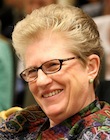Jews and Christians Learn From Memoirs: A Collegially Taught Course
Reading Memoirs, from Cover to Cover
| Memoirs for Fall 2012 |
|---|
|
Fremont, Helen. After a Long Silence: A Memoir (Delta, 2000).
Fremont tells the story of a deep family secret, and explores its consequences for her family’s sense of identity.
|
|
Lester, Julius. Lovesong: Becoming a Jew (Arcade, 1995).
Lester, son of black Methodist minister, a prolific author and civil rights activist, narrates his own complex search, including his conversion to Judaism and interracial marriage.
|
|
Miles, Sara. Take This Bread: A Radical Conversion (Ballatine, 2008).
Miles, a self-described, left wing, secular lesbian, has a dramatic conversion to Christianity through the experience of communion, which awakens her determination to feed the hungry.
|
|
Shapiro, Dani. Devotion: A Memoir (Harper Perennial, 2010).
Shapiro, raised in an Orthodox Jewish home, reflects on her own struggle to find spiritual practices that sustain her.
|
|
Taylor, Barbara Brown. Leaving Church: A Memoir of Faith (HarperSanFrancisco, 2006).
Brown, an Episcopal priest, is a well-known preacher and author. In Leaving Church, she tells the story of the burnout she experiences in pastoring a rural congregation—a book every clergy person (and anyone who works intensely in the religious realm) should read.
|
|
Wilkes, Paul. In Due Season: A Catholic Life (Jossey-Bass, 2009).
Wilkes, a journalist who has written books on Jewish and Catholic congregational life, reflects on his own complex journey as a Catholic of Slovak descent.
|
|
Willis, Jan. Dreaming Me: Black, Baptist, and Buddhist: One Woman’s Spiritual Journey (Wisdom, 2008).
A black woman from a poor family in Alabama, Willis becomes a distinguished scholar of religions of the East, a practicing Buddhist—and a lifelong Baptist.
|
In the fall term of 2012, we taught an interreligious seminar, “Faith Journeys and the Religious Education of Adults,” for students from our two seminaries, which are across the street from one another. The course involved a close reading of contemporary religious memoirs by Jewish and Christian authors. In addition to providing the intrinsic value of reading about varied religious journeys, this course challenged students to draw insights for their practice as religious professionals, and to embed that practice in a deeper understanding of religion in contemporary American life.
Making selections among the many memoirs constituted a key pedagogical decision. During the preceding spring and summer, we each read or re-read about 15–20 memoirs by Jewish and Christian authors and met on a regular basis to develop criteria for selection. In every case, we sought compellingly written narratives. Then we looked for memoirs that spoke to a range of religious sensibilities within our respective traditions, eventually choosing a list of seven books that constituted the backbone of our seminar. We integrated an eighth text, The Redemptive Self (McAdams 2006), as a means of offering a theoretical basis to our course.
Once the course began, conversation became the dominant strategy. From the start we emphasized the importance of careful listening and respectful exchange, since we were not simply reading about the faith journeys of our authors, but also opening up our own lives of faith. We also met in an informal setting that enabled people to be more comfortable than in a typical classroom. Generally, about 3–4 days prior to the class meeting, we would send out several open questions about each week’s reading. These became the conversation starters, but particularly as the level of trust deepened, participants raised personal issues and shared examples from their own struggles as seminarians.
The course was demanding in that we required reading eight books (most available in electronic format) and preparation for each discussion. This proved to be a challenging element, particularly in a time when many professors use an anthology of e-readings. One second-year graduate student told us it was the first time since she had been in seminary that she had read an entire book—let alone eight of them!
We had three written requirements: a letter to one of the memoirists, to be shared with all in the course; a self-evaluation; and the design of the cover of one’s own memoir: title (and sub-title), layout, front flap, author identification, and excerpts on the back. We ended the course with an opportunity for each participant to share her or his cover—one of the best sessions either of us has ever led. We will further discuss our reactions to the final project in the next section.
Attentive Listening as Pedagogical Strategy and Interreligious Value
The animating background values that guided this course included the following priorities:
- Modeling for students how to read, interpret, and respond empathically to the narratives that religious seekers tell through their memoirs. Through such modeling we sought to guide the learners toward becoming attentive readers of the stories on the written page, as well as attentive listeners to their own evolving faith journeys. Empathy was stressed in order to encourage the learners to identify those aspects of the memoirs that resonated in their own lives, with the other authors, and with each other as a group of students.
- Listening to the authors and to each other in ways that helped the students discover themes and experiences that transcend specific religious traditions, while also appreciating those that are rooted more firmly in the particularity of distinctive religious traditions.
Because this course was geared toward developing an understanding of teaching adults through the use of spiritual memoirs, two domains of educational literature were pertinent: theory and practice of adult learning and, as a subset, the varied uses of narrative in adult education. A two-fold goal was to guide the students to a more sophisticated self-reflection on their own faith journey while helping them acquire or enhance their skills as teachers of adults in a religious context. In retrospect, we should have devoted more time and resources to enhancing their abilities to function as adult educators.
Educational research has identified the transformative potential of learning in adulthood. In a religious context, adult education includes the ongoing construction of a self-narrative that can help the learners incorporate their spiritual and religious seeking in a way that allows them to arrive at a more integrated adult identity. Our course was structured around multiple layers of narrative, driven by the texts themselves, the personal narratives of the students, and the narratives of the two religious traditions of Christianity and Judaism.
One significant element of the course involved the two of us acting as facilitators rather than lecturers. Facilitation called for the teachers to step back from our role as experts and open up a space for active participation for the learners, primarily through conversation with and among the students. Because it was a small group, the emphasis on discussion gave each student ample opportunity and motivation to participate, thus honing their own thinking through externalizing their thoughts verbally as well as responding to their peers’ ideas. Some students struggled with this component of the course, and at times we had to devise more thorough strategies for ensuring that every student claimed her or his voice.
The final assignment offered the students a chance to synthesize the various dimensions of their learning. Although they were given a choice of either reading a separate memoir and preparing a visual and oral presentation or creating a book jacket for their own imagined spiritual memoir, all chose the latter assignment. This task required them to identify and reflect upon the core theme or themes of their own faith journey, to draw from the memoirs as referential texts while designing their own unique vision. The students found this experience enlightening and absorbing, as did the instructors. The project emerged as a compelling and moving way to synthesize the collective learning and the individual insights that grew out of it. Neither of us anticipated the extent to which the students would be excited about this unusual kind of assignment in an academic setting. We felt that most of them discovered new aspects of their identities as religious individuals as a result.
Bridging the Personal and the Academic
Our course bridged the gap between a rigorous reading of texts in an academic context and more personal connections to one’s religious tradition. Early in the course, we sensed that some students were skeptical about the intellectual demands of reading narratives of people’s religious lives; as the semester progressed, they realized that an attentive reading required them to expand their universe of imaginative empathy, develop respect for complicated life journeys, and draw upon resources from their other courses.
Using the memoirists as interlocutors enabled participants to glimpse the ways a different religious tradition functions in the lives of its adherents; participants also came to the realization that even dissimilar rituals and stories often spoke to common concerns or questions. Because a number of the memoirists admitted to their own uncertainties about their beliefs, our participants were able to situate some of their own doubts and apprehensions in a larger context.
We believe our approach is valuable in any interreligious setting. If memoirs are not as numerous in your field, biography and autobiography might be substituted. Moreover, we encourage professors across the range of religious studies to incorporate narratives into their courses as a way of inviting students to move beyond abstraction into the messiness of peoples’ lives. This is of particular value for those whose life work will center on pastoral concerns.
Teaching collegially is both labor intensive and relational intensive; we set aside significant amounts of time to plan together. Nevertheless it is an immense pleasure to have a partner with whom to process the class sessions, to discuss concerns about students, and to collaborate in the creative and demanding work of teaching.
 Mary C. Boys is the dean of academic affairs and the Skinner and McAlpin Professor of Practical Theology at Union Theological Seminary in New York City. Her most recent book, Redeeming our Sacred Story: The Death of Jesus and Relations between Jews and Christians (Paulist Press), will appear in October 2013.
Mary C. Boys is the dean of academic affairs and the Skinner and McAlpin Professor of Practical Theology at Union Theological Seminary in New York City. Her most recent book, Redeeming our Sacred Story: The Death of Jesus and Relations between Jews and Christians (Paulist Press), will appear in October 2013.
 Sarah Tauber is an assistant professor of Jewish education at the Jewish Theological Seminary of America. She was the former education director of Congregation Beit GIL in Geneva, Switzerland, and is currently the book review editor of the Journal of Jewish Education.
Sarah Tauber is an assistant professor of Jewish education at the Jewish Theological Seminary of America. She was the former education director of Congregation Beit GIL in Geneva, Switzerland, and is currently the book review editor of the Journal of Jewish Education.
